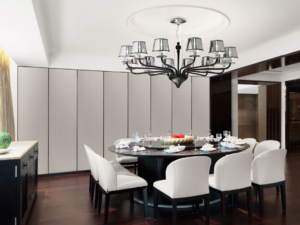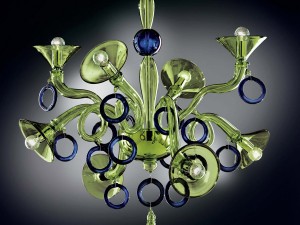
Selecting the perfect light fixture for a dining table or any table setting can be both exciting and challenging. The right fixture does more than just illuminate; it sets the mood, complements your décor, and becomes a focal point in the room. But how do you determine the correct size for your light fixture to ensure it looks proportionate and enhances the space?
This comprehensive guide will walk you through everything you need to know to choose the right size light fixture over a table. We’ll cover key considerations, provide a simple formula, and offer tips for making the best decision.
Key Considerations When Choosing a Light Fixture
Before diving into the specifics of sizing, it’s essential to consider the following factors that will influence your choice:
1. Table Size and Shape
The dimensions and shape of your table are the starting points. A light fixture should align with the table’s size to ensure a balanced look. For instance, a large rectangular table might require a linear chandelier, while a small round table could look stunning with a compact, round pendant light.
2. Ceiling Height
Ceiling height impacts how low or high the light fixture should hang. Low ceilings may necessitate a flush or semi-flush mount light, while higher ceilings offer the flexibility for a more dramatic, hanging chandelier or pendant.
3. Room Size
Consider the overall room size in relation to your table and light fixture. A large room with a small table might benefit from a slightly larger fixture to create visual balance.
4. Style and Design
The style of the light fixture should complement your interior design. Whether your home features a modern, rustic, traditional, or eclectic style, there’s a light fixture that can enhance your space’s aesthetics.
5. Light Output
Think about the type and amount of light you need. A dining room usually benefits from ambient lighting with dimmable options for flexibility. Ensure that your fixture provides adequate illumination while fitting the room’s ambiance.
The Simple Formula for Sizing Your Light Fixture
To ensure your light fixture is proportional to your table and room, you can use a simple, yet effective formula. This formula calculates the ideal diameter or width of your fixture based on your table’s dimensions.
The Basic Formula
Fixture Diameter (inches) = Table Width (inches) divided by 2 + Table Length (inches) divided by 2 Fixture Diameter (inches)
Alternatively, you can adjust this slightly to fit the specific style or shape of the table:
Fixture Diameter (inches) = Table Width (inches) × 0.75
Breaking Down the Formula
For Rectangular Tables:
Measure the width and length of your table.
Add the width and length together.
Divide this sum by 2.
The result gives you the ideal diameter (or width) of the light fixture in inches.
Example:
For a table that is 40 inches wide and 80 inches long:
Fixture Diameter = 40 + 80 divided by 2 = 60 inches
A 60-inch wide fixture is an appropriate choice for this table size.
For Round or Square Tables:
Measure the diameter (for round) or width (for square) of your table.
Multiply this measurement by 0.75.
Example:
For a round table with a diameter of 50 inches:
Fixture Diameter = 50 × 0.75 = 37.5 inches
A 37.5-inch wide fixture is ideal for this table.
Height Considerations
In addition to width, the height at which you hang your light fixture is crucial. The standard rule is to hang the fixture so that the bottom is 30 to 36 inches above the table surface for a ceiling height of 8 feet. For every additional foot of ceiling height, add 3 inches to the hanging height.
For example, if you have a 10-foot ceiling, the bottom of the light fixture should be 36 to 42 inches above the table.
Customizing the Formula for Your Space
While the formula above offers a solid starting point, customizing the fixture’s size and height can enhance your space’s overall look. Here are some tips for tweaking the formula to suit your specific needs:
1. For Large Rooms
If your dining area is particularly spacious, consider sizing up your light fixture slightly beyond the formula’s recommendation. A larger fixture can create a grand, dramatic effect without overwhelming the space.
2. For Small Spaces
In a smaller room, you might want to choose a fixture that’s slightly smaller than the formula suggests to avoid a crowded feel. This approach ensures the space remains open and inviting.
3. Multiple Fixtures
For very long tables or open spaces, using multiple light fixtures instead of one can provide even illumination and a balanced aesthetic. In this case, apply the formula to determine the size of each fixture and ensure they are evenly spaced along the length of the table.
4. Personal Style and Preferences
While formulas and guidelines are helpful, personal taste and the overall design vision should guide your final decision. If a particular fixture speaks to you or fits perfectly with your décor, don’t be afraid to go with your instinct.
Considerations for Various Fixture Styles
Different styles of light fixtures bring their own set of considerations. Here’s how to approach choosing the right size for some popular fixture styles:
1. Chandeliers
Chandeliers are often the go-to for dining tables, offering elegance and a statement piece. Because chandeliers can be intricate and multi-tiered, consider choosing a slightly smaller diameter if the fixture is visually dense. This avoids making the space feel too crowded.
2. Pendant Lights
Pendants are versatile and can be used in groups over longer tables or individually over smaller ones. When using multiple pendants, ensure they are evenly spaced, and the combined width follows the sizing formula.
3. Linear Suspension Lights
These are ideal for long, rectangular tables. They provide even lighting across the table’s surface and have a sleek, modern appeal. For these, focus on the fixture’s length, ensuring it covers around two-thirds to three-quarters of the table’s length.
4. Flush and Semi-Flush Mounts
If ceiling height is a concern, flush and semi-flush mounts offer a practical solution. These fixtures sit closer to the ceiling, making them perfect for rooms with lower ceilings. When choosing these, ensure they still cover a proportionate amount of the table’s width as calculated.
Enhancing the Look with Murano Glass
At Murano Imports, we specialize in Murano glass chandeliers, renowned for their exquisite craftsmanship and timeless beauty. Choosing a Murano glass light fixture adds a touch of luxury and art to your dining area. Here’s how you can select the right Murano glass fixture for your table:
1. Consider the Glass Color
Murano glass fixtures come in various colors and finishes. Choose a color that complements your dining room’s palette. Clear or neutral tones are versatile, while vibrant colors can make a bold statement.
2. Custom Sizes and Shapes
One of the unique advantages of Murano glass fixtures is the ability to customize. If the standard sizing formulas don’t fit your needs, we can create custom sizes to perfectly match your space.
3. Complementary Décor
Murano glass chandeliers often feature intricate designs. Ensure your table décor complements rather than competes with the fixture. Simple, elegant table settings often work best with these statement pieces.
Final Thoughts
Choosing the right size light fixture over your table is a blend of art and science. While formulas provide a strong foundation, your personal style, the room’s overall design, and the specific qualities of the fixture will ultimately guide your choice.
At Murano Imports, we offer a wide selection of high-quality, custom-made light fixtures that can be tailored to your exact specifications. Whether you’re looking for a classic Murano glass chandelier or a modern pendant, we have the expertise to help you find the perfect piece.
By following the guidelines in this article and trusting your design instincts, you’ll find a light fixture that not only fits your table perfectly but also enhances the beauty and functionality of your dining space. Visit our website to explore our collection and begin your journey to the perfect dining room ambiance.


